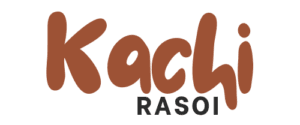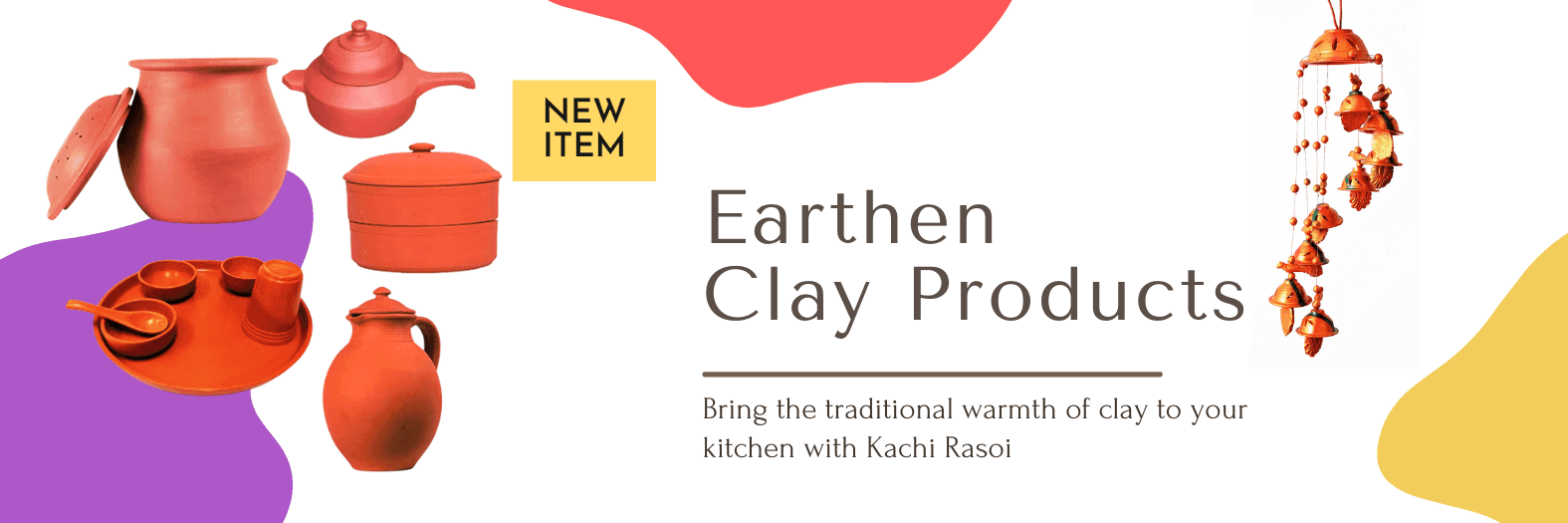Clay Cookware: Traditional Cooking with a Healthy, Earthy Touch
In recent years, more people are returning to the roots of traditional cooking, and
clay cookware is making a major comeback. Known for its natural properties, health benefits, and ability to enhance flavor,
clay cookware is not just a kitchen trend—it’s a lifestyle choice. Whether you’re simmering curries in a clay
Kadai, roasting on a clay
Tawa, or storing water in a
Matka, this ancient cookware adds authenticity and wellness to your meals.
What is Clay Cookware?
Clay cookware refers to pots, pans, and other cooking or storage vessels made from natural, unglazed clay. These items are hand-molded and fired in kilns, giving them a rustic finish and earthy appeal. Clay vessels have been used for centuries in Indian, African, Middle Eastern, and Mediterranean kitchens. Today, they’re loved for both their aesthetics and practical benefits.
Types of Clay Cookware
1. Clay Kadai (Wok-style Pot)
The
clay Kadai is ideal for cooking sabzis, dals, gravies, and even deep frying. Its round bottom and thick walls distribute heat slowly and evenly, preserving nutrients and enhancing flavors.
2. Clay Tawa (Flat Griddle)
Perfect for making rotis, parathas, dosas, and even pancakes, the
clay Tawa retains heat well and gives food a delicious smoky aroma. Its porous surface helps reduce sticking when seasoned properly.
3. Clay Matka (Water Pot)
Traditionally used for water storage, the
clay Matka keeps water naturally cool and adds a subtle earthy taste. It’s an eco-friendly alternative to plastic bottles and refrigerators.Using a
clay Matka, also known as an
earthen pot, is a time-honored way to store and cool drinking water naturally. To get the best results, it’s important to know
how to use and maintain clay Matka properly. Before first use, soak the Matka in clean water for 24 hours to remove any impurities and strengthen the clay. Always place it on a flat surface with a stand or coaster to avoid cracking. When filling it with water, ensure the pot is cleaned with a soft brush and plain water—avoid using detergents, as clay is porous and can absorb chemicals. To maintain your clay Matka, rinse it every 2–3 days and let it dry naturally in the shade. Avoid sudden temperature changes, such as pouring cold water into a hot Matka, to prevent thermal shock and cracks. With proper care, your
earthen pot will keep water cool, fresh, and naturally alkaline, making it a perfect eco-friendly alternative to plastic and metal containers.
Youtube link (kachi Rasoi ) :
https://www.youtube.com/@KachiRasoiInstagram link:
https://www.instagram.com/kachirasoii/Benefits of Clay Cookware
Using
clay cookware offers a wide range of advantages, from health to taste:
Using your fingers to pinch and shape the clay. Great for small bowls and organic forms.
Natural clay contains calcium, magnesium, and iron that can seep into food.
Non-Toxic and Eco-Friendly
Unlike Teflon-coated or aluminum pans, clay pots are chemical-free and biodegradable.
The earthy aroma of clay cookware enriches food with a natural, smoky taste.
Clay neutralizes acidity in food, promoting better digestion.
How to Use and Maintain Clay Kadai
Clay Kadai has become a popular cookware choice among health-conscious and traditional food lovers. Known for enhancing the taste and nutritional value of food,
clay Kadai is more than just a kitchen tool—it’s a connection to slow, mindful cooking. But to make the most of it, you need to know
how to use and maintain a clay Kadai properly. In this article, we’ll walk you through the
steps to season, use, and care for your clay Kadai, so it lasts for years and gives you the best cooking experience.
How to Use a Clay Kadai for the First Time
Before cooking in your new
clay Kadai, you must season it properly to prevent cracking and improve durability.
Step-by-Step Clay Kadai Seasoning Process:
1. Soak the Kadai in Water
Immerse the Kadai in water for 8–12 hours. This strengthens the clay and prevents cracks during the first use.
2.Rub with Starch or Flour Paste
After soaking, rub the inner surface with rice starch, wheat flour paste, or garlic paste. Let it dry naturally for 24 hours.
3.Slow Heat Introduction
Begin cooking something simple like rice or dal to allow the Kadai to adjust to heat gradually.
4.Avoid Sudden Temperature Changes
Never pour cold water into a hot Kadai or place it directly on a high flame. Always start with a low flame and increase slowly.
How to Use a Clay Tawa for the First Time
BBefore using a
clay Tawa, it’s important to season and prepare it properly to avoid cracking and ensure longevity.
Step-by-Step Clay Tawa Seasoning Guide
1. Soak in Water
Submerge the clay Tawa in water for at least 6–8 hours to strengthen the structure and prevent breakage during heating.
2.Dry and Oil It
Let it dry naturally. Then apply a thin coat of cooking oil (like mustard or sesame oil) over the surface. Let it rest for 12–24 hours.
3.Initial Heating
Heat the Tawa slowly on low flame for 10–15 minutes. This helps the clay adjust to high temperatures gradually.
4.Cook Basic Foods First
Start with simple items like plain parathas or dry roasting spices to break it in.
Clay Matka: The Natural Way to Store and Cool Water
A
clay Matka, also known as an earthen pot, is a traditional and eco-friendly vessel used for storing drinking water. Loved for its natural cooling properties, a Matka keeps water refreshingly cool without the need for refrigeration, making it an ideal choice for health-conscious and environmentally aware households.The porous nature of clay allows slow evaporation, which naturally cools the water and adds a mild earthy flavor that’s both nostalgic and refreshing. Using a clay Matka also helps maintain a consistent temperature, preserving the minerals in water without introducing harmful chemicals found in plastic containers.It’s perfect for summer months, helping you stay hydrated in a healthier, more sustainable way. To ensure longevity, always soak a new Matka before first use and clean it regularly with mild soap and warm water. Avoid using harsh detergents, and always let it dry completely before refilling. Switching to a clay Matka is a simple step toward natural living—combining tradition, health, and sustainability in every sip.
How to Use and Maintain Clay Matka (Earthen Pot)
Using a
clay Matka, also known as an
earthen pot, is a time-honored way to store and cool drinking water naturally. To get the best results, it’s important to know
how to use and maintain clay Matka properly. Before first use, soak the Matka in clean water for 24 hours to remove any impurities and strengthen the clay. Always place it on a flat surface with a stand or coaster to avoid cracking. When filling it with water, ensure the pot is cleaned with a soft brush and plain water—avoid using detergents, as clay is porous and can absorb chemicals. To maintain your clay Matka, rinse it every 2–3 days and let it dry naturally in the shade. Avoid sudden temperature changes, such as pouring cold water into a hot Matka, to prevent thermal shock and cracks. With proper care, your
earthen pot will keep water cool, fresh, and naturally alkaline, making it a perfect eco-friendly alternative to plastic and metal containers.
Youtube link (kachi Rasoi ) :
https://www.youtube.com/@KachiRasoiInstagram link:
https://www.instagram.com/kachirasoii/
